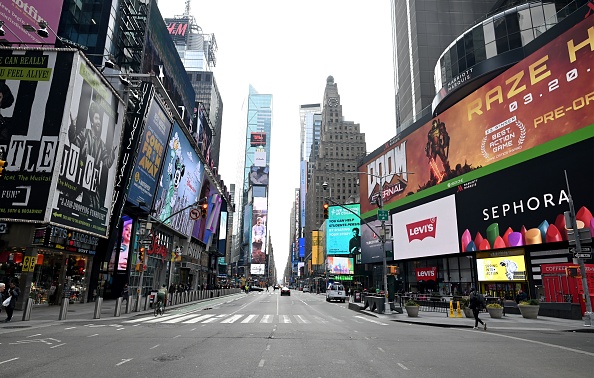NYC Retail Market Warms Up, But Available Space Hits Record High
By Celia Young July 16, 2021 3:56 pm
reprints
The New York City retail market has started to warm with the weather, but asking rents are still dragging behind pre-pandemic levels and the number of available space hit a record high, according to CBRE (CBRE)’s second-quarter retail report.
Available space jumped from 275 spaces in the first quarter to 290 in the second quarter throughout the 16 prime retail corridors tracked by CBRE. The average retail asking rent for those corridors dropped less than one percent since the first quarter, to $615 per square foot — the 15th quarter in a row it dropped.
But, the lack of retail activity has not been equally shared among Manhattan’s popular shopping destinations. SoHo saw the highest leasing velocity, but also a 22.9 percent drop in average asking rents year over year, from $631 to $487 per square foot, the deepest decline in the report. But, Prince Street in SoHo saw an increase in average asking rent both from the first quarter and last year.
Times Square saw the second-largest annual decrease in asking rents in the second quarter, dropping from $1,647 to $1,277 per square foot. Meanwhile, the Plaza District and Flatiron/Union Square saw the second- and third-highest square footage leased in the second quarter, respectively.
The discrepancy between areas like Times Square and Union Square might be due to the absence of international tourists, said Hironori Imaizumi, CBRE’s senior analyst for the firm’s retail team.
“The areas that we are seeing in trouble, most are places where tourism is a huge factor,” said Imaizumi. “An example is Times Square, [which], at the moment, is still facing a huge amount of pressure to decrease rent, because of the fact that there’s been such a lack of activity, and we don’t even know once the restrictions are lifted if the activity is going to return to the neighborhood.”
Tourism has been on the mind of the real estate community as well. The city’s $80 billion tourism industry took a massive hit during the pandemic and recent concerns over gun violence have left industry leaders wondering when travelers will return.
Imaizumi was more optimistic about a recovery, however, because of new leases from companies looking to open a New York flagship location. Most recently, Popeyes signed a lease for a 6,100-square-foot Times Square flagship at 1530 Broadway, the New York Post reported.
“The one thing that I’m very happy to see is we saw a lot of external demand come back,” said Imaizumi. “These are companies that you know want to establish their flagship store.”
He was also optimistic that low rents could allow small- and medium-sized businesses to crop up and increase retail activity as well.
Availability is up, too. Retailers and consumers have increased their focus on more affordable markets in Midtown South and Downtown, while Upper Madison Avenue increased the number of ground-floor spaces by 25 percent, from 44 to 55, and availability doubled at Fifth Avenue in Flatiron. But, Imaizumi cautioned that some new vacant space might just be due to the natural life cycle of leases.
“A lot of these tenants are currently also facing their natural lease expirations,” said Imaizumi. “And the market is just not attractive enough to stay in those spaces but … what we don’t capture is that sometimes they relocate to better markets within the city.”
Leasing velocity has continued to slow, but Imaizumi said leasing velocity data tends to lag as CBRE gets information on more second-quarter deals after the quarter ends, though he was still surprised by the slowdown.
Celia Young can be reached at cyoung@commercialobserver.com.


